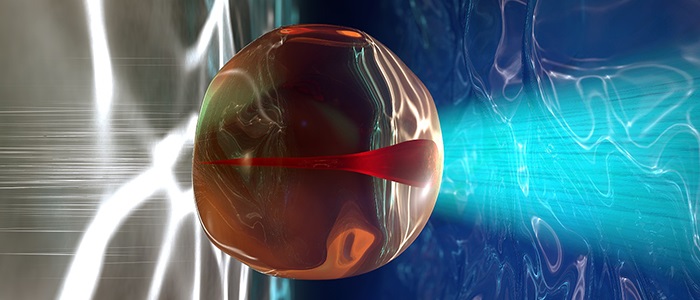News
3D printing bone tissue
Jun 28 2022
They say that oil and water don’t mix, but they’ve proven to be the perfect pair in research into moving droplets in 3D using only light.

ACES Chief Investigator Professor David Officer and his ACES affiliated research team at UOW have broken new ground in guiding droplets with precision and control in 3D. For the first time, UOW PhD students Yang Xiao and Sara Zarghami have demonstrated that oil droplets can be moved and guided through water simply using light.
This work not only demonstrates that droplets can be remotely moved from one point to another in a container, but that a droplet can be guided to pick up a cargo that can then be transferred to another site where the cargo can undergo a chemical reaction.
The development of life on Earth as we know it can be attributed to the movement of chemicals in fluids, and the ability to emulate this process opens up an exciting new era in droplet research. Potential future uses include the development of new fluidic diagnostic and sensing systems; more controlled and targeted drug delivery; the refinement of microreactors; and the creation of multi-droplet fluidic-based information and computing systems.
The 3D droplet system developed by the UOW-based team of international researchers uses a photoactive material or chemical ‘fuel’ within the droplet that allows the droplet to be pushed or pulled in any direction by the light from a laser pointer. Since the movement does not depend on the fluid that encases the droplet, droplets can be moved in pure water for the first time. The system is not limited to water, and the team has already demonstrated that it can be applied to water droplets in oil.
Professor Officer said the work of the international research team from Australia, Ireland and New Zealand has changed the way researchers can move and use droplets in applications.
“The research captures the imaginations of anyone who has seen the 3d droplet movement in action, and has already inspired new international collaborations in Germany and France,” David said.
“Droplets are pretty significant in our lives –even at a simple level, we need them to water our gardens and make our grass grow; soothe our irritated eyes; and bring our salads to life with a zesty dressing. Our team’s work will see droplets have a greater impact, especially in terms of fluidic chemical transport and applications, well into the future.”
To date, there have been a number of examples of oil droplet movement on water or on the bottom of a container under water using a chemical reaction in the droplet or the water to move the droplet. However, this movement has typically been random with no ability demonstrated to carry and place chemicals.
The full paper on ‘Moving Droplets in 3D Using Light’ was published in the high impact materials science journal Advanced Materials. You can read it online here.













